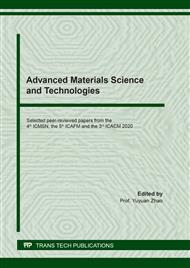p.3
p.9
p.15
p.23
p.31
p.41
p.49
p.56
p.62
Fabrication of Carbon Nanotube/ Aluminum Matrix Functionally Graded Materials Using Centrifugal Slurry Methods
Abstract:
Carbon nanotube (CNT) has received broad scientific and industrial attention due to their excellent mechanical and functional properties. However, CNT has not been effectively used for high performance composites because of degradation of mechanical properties due to insufficient dispersibility of CNT in the matrix. In this study, CNT/ aluminum (Al) matrix functionally graded materials (FGMs) have been focused on. The processes of dispersion of CNT have been carried out with the solvent of dimethylacetamide, and the dispersing agent of potassium carbonate, which is an inorganic salt, under ultrasonic sonication conditions. Centrifugal slurry methods have been applied to obtain gradient of content of CNT in CNT/ Al matrix FGMs. Tribological characteristics on CNT/ Al matrix FGMs have been investigated using a ball-on-disk tribometer. It has been demonstrated that CNT contributes to enhance wear resistances.
Info:
Periodical:
Pages:
31-40
Citation:
Online since:
March 2021
Authors:
Price:
Сopyright:
© 2021 Trans Tech Publications Ltd. All Rights Reserved
Share:
Citation:


